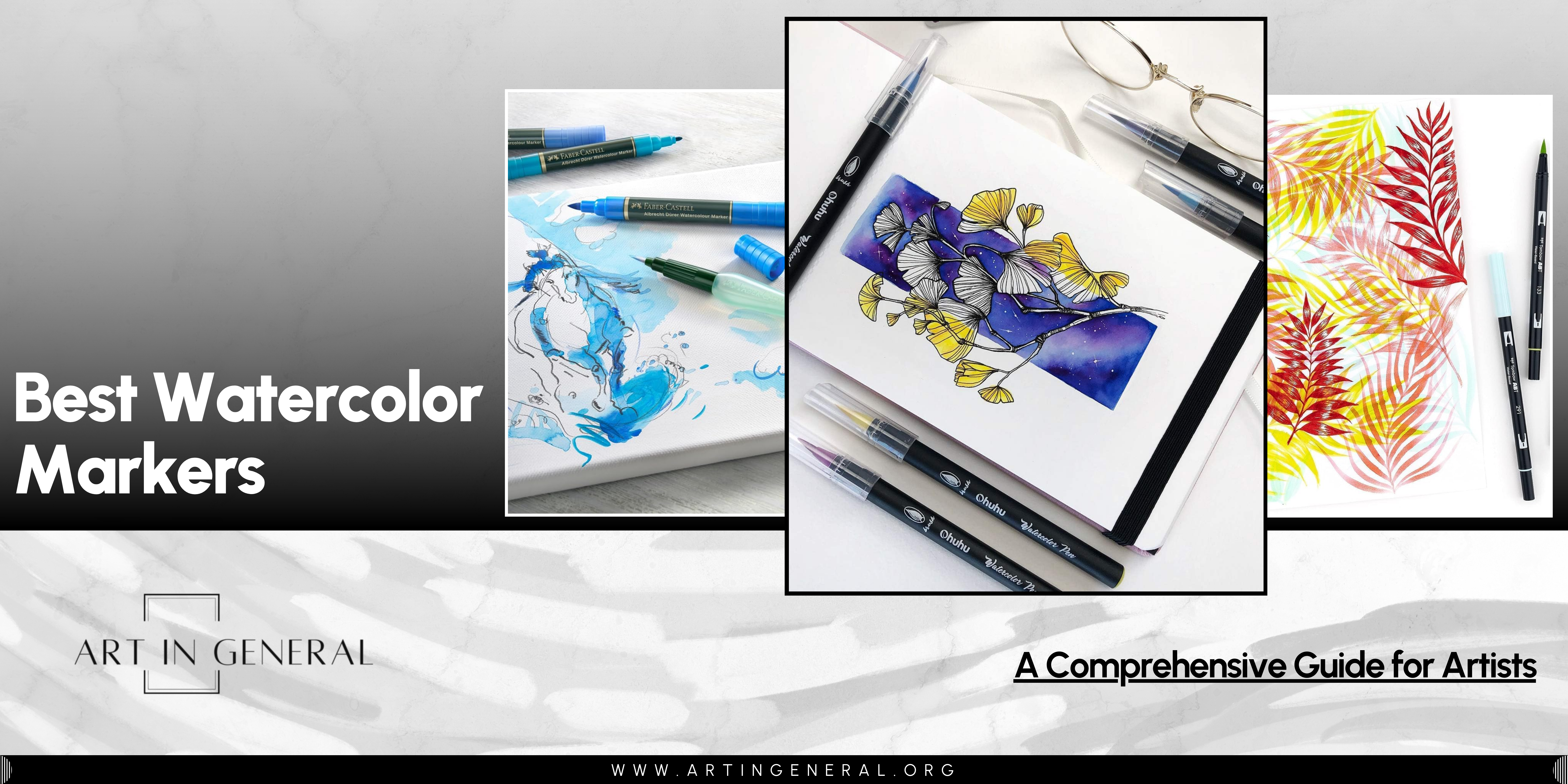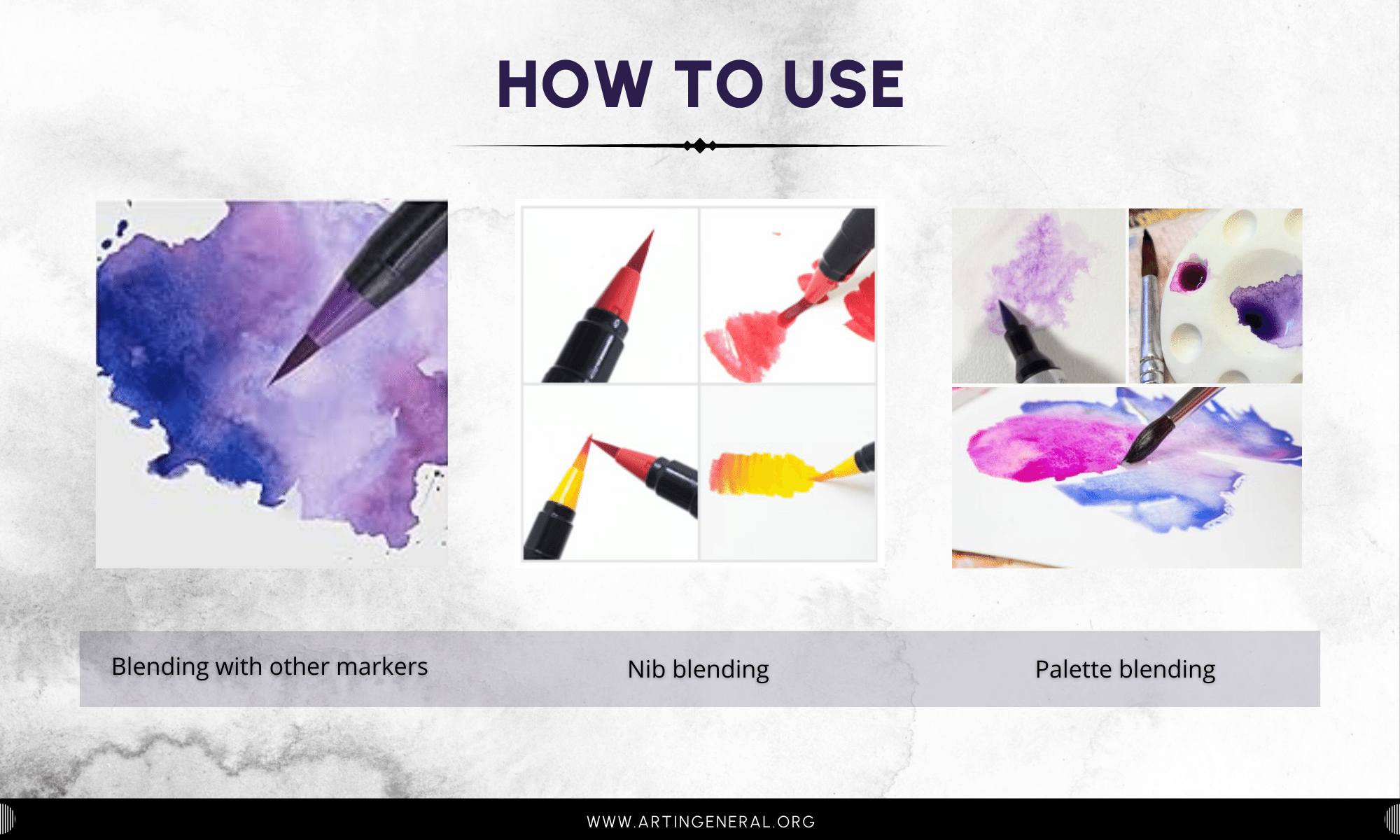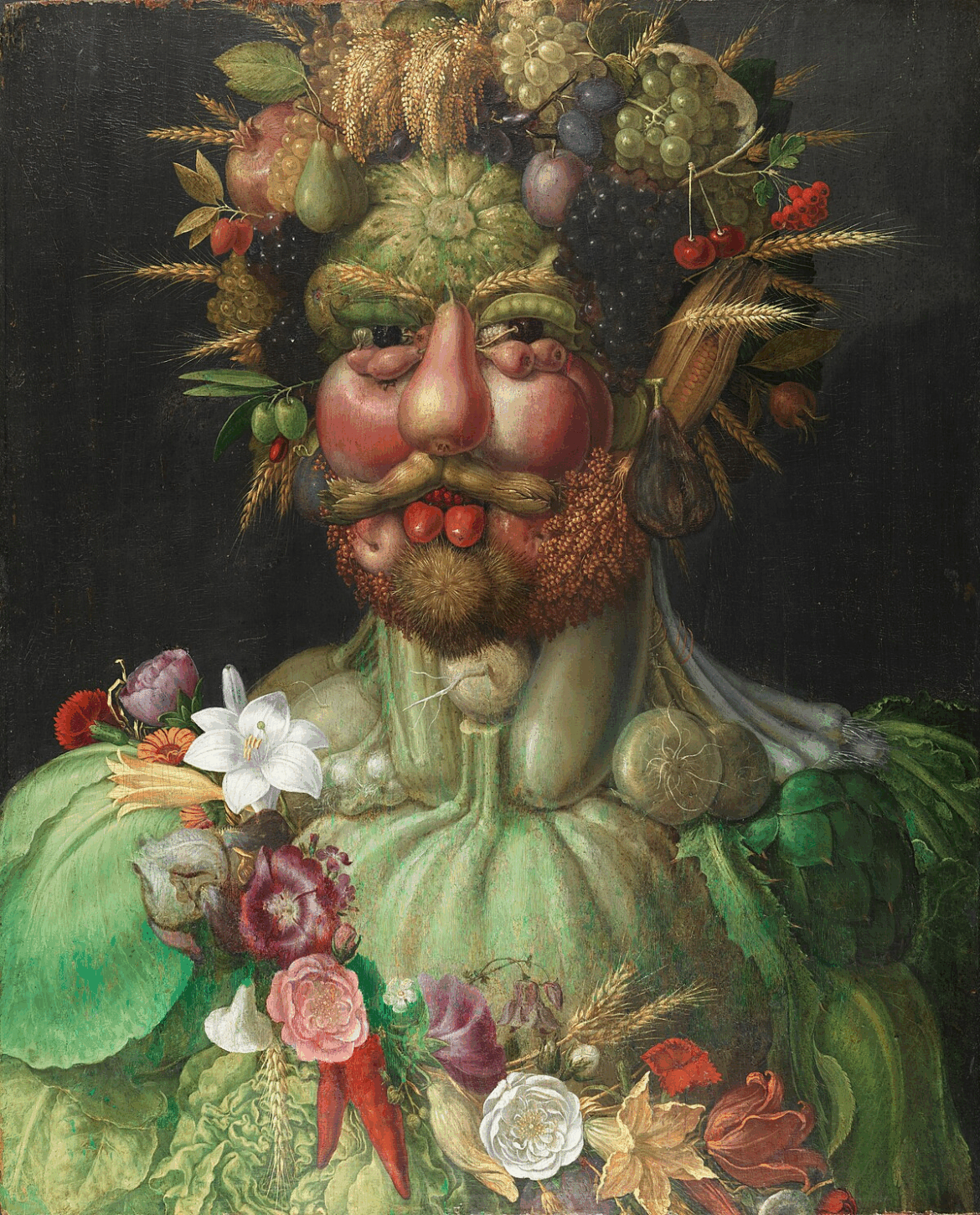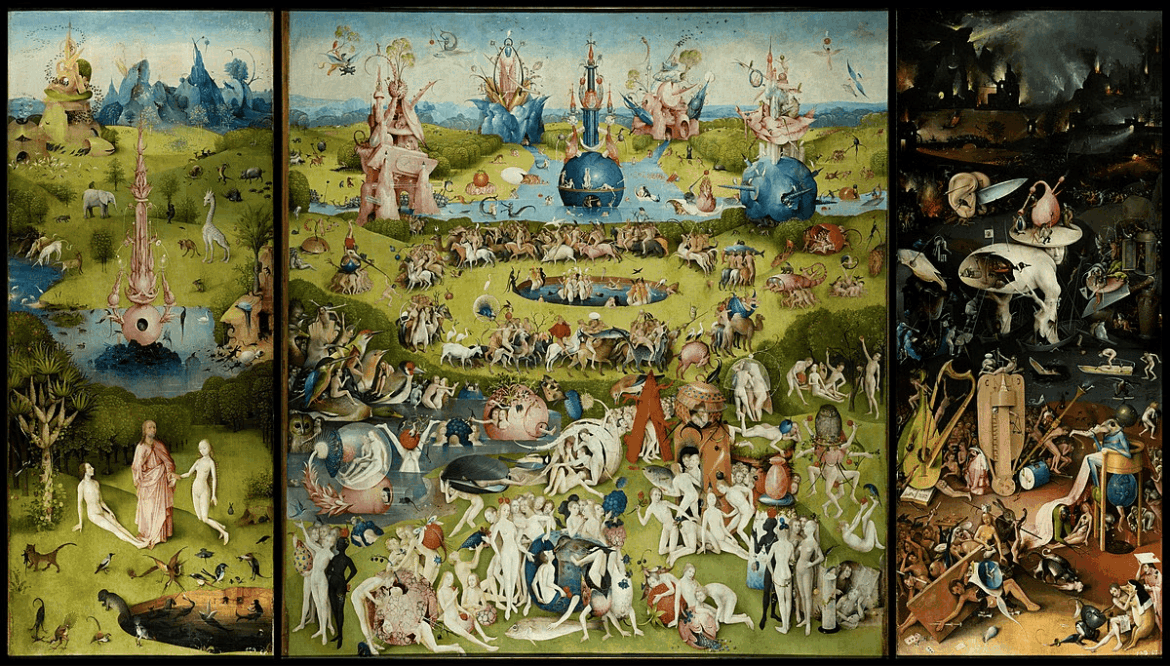
In the world of art supplies, watercolor markers have emerged as a game changer for artists and art enthusiasts, capturing their hearts and attention with their convenience and ease of use. These are art supplies that lie somewhere between watercolor paints and markers and are ideal for artists of all levels and ages.
In this article, we’ll cover everything you need to know about watercolor markers, how to choose the best markers for you, from the quality of the pigment to the price and value they offer. We’ll also provide you with a well curated list of the best watercolor markers available on the market today, including options for all needs and budgets. Let’s get started!
What Are Watercolor Markers?

Watercolor markers are markers that combine the fluid nature of watercolors with the practical, precise, and portable nature of markers, making a fantastic tool that combines traditional watercolor painting with the convenience of markers.
Unlike traditional watercolors that require a full setup (water, palette, paints, and brushes) watercolor markers come in a pen-like form, with a flexible brush tip that mimics the softness and strokes of a paintbrush making the application direct, easy and mess-free.
Watercolor markers are usually filled with water-based ink or water-soluble pigment that can be blended and layered just like traditional watercolors. The shape of the tip and body of the case is great for lettering artists, plein-air painters, urban sketchers, and coloring lovers.
How to Choose the Best Watercolor Markers
Pigment Quality

The intensity and durability of the colors lie in the quality of the pigments that goes into the composition of the markers. Better quality watercolor markers will give you a wide range of colors that are deep and bright and do not fade once they have dried. Check for quality markers that use professional-grade pigments since they are likely to have better color strength and resistance. Some may also specify if they are lightfast which means they have the ability to maintain their colors when exposed to light.
Brush Tip

There are different tips in markers, however watercolor markers are characterized for their brush tip, which is pointy but flexible, allowing you to make fine lines and fill broad areas at the same time. This tip is also great for lettering and calligraphy. Make sure the markers you’re getting have a brush tip, especially if you’re planning on using your markers for lettering.
Water Solubility and Blending

One of the main advantages of watercolor markers is their ability to blend and create beautiful watercolor effects. The markers should have excellent water solubility, meaning the colors should easily dissolve and blend when activated with water. This feature allows artists to create smooth transitions, gradients, and washes. Look for markers that blend seamlessly and react well with water, providing a natural watercolor look, and look out for water-based markers that are labeled incorrectly and that won’t blend or dissolve in water.
Lightfastness

Lightfastness refers to the ability of the pigments used on a medium to resist fading when exposed to light over time, and while this might no be a crucial aspect for artists that are practicing, for professional artists or those who want to sell or display their works, lightfastness becomes a crucial aspect to consider.
High quality markers will always provide information about their lightfastness rating, while low quality markers won’t and will tend to fade within days if not hours of light exposure.
Non-Toxicity
Safety is another important factor, especially in regards to the artists, who spend a lot of time with their art supplies or artists who paint with children. Check and confirm the watercolor markers you want to purchase are non-toxic and are safe to use. This is especially useful if you want to incorporate the markers for learning or if you intend to use them around children.
Price
Of course, price should always be taken into consideration, but instead of going for the cheapest or highest value option, it is always necessary to consider what you can get in return for the markers you are going to purchase. Pricey sets tend to be of higher quality and come with brighter pigments and long-lasting colors, however there are many cheap options that do not sacrifice color intensity and variety and are just as good but won’t last as long. To that end, evaluate your needs and your budget in order to find the right balance for your situation.
Best Watercolor Markers Today
- Best Watercolor Markers Overall — Faber-Castell Albrecht Dürer Watercolor Markers
- Best Watercolor Markers for Lettering — Tombow Dual Brush Pens
- Best Professional Watercolor Markers — Winsor & Newton Watercolor Markers
- Best Budget Watercolor Markers — Ohuhu Watercolor Brush Pens
- Best Watercolor Markers for Beginners — Staedtler Double-Ended Watercolor Brush Pens
1. Best Watercolor Markers Overall — Faber-Castell Albrecht Dürer Watercolor Markers

View Prices
About Faber-Castell Albrecht Dürer Watercolor Markers
Albretch Durer watercolor markers are nothing but the best choice for both professionals and hobbyists, their vibrant colors are highly pigmented and very light-fast, and in contrary to other brands, they are actually made with pigments instead of dyes, which makes them behave more like watercolors than inks.
Each marker has two tips, a brush tip and a fine bullet tip, which cover broad traces, fine details and uniform applications.
These markers are also super durable and non-toxic, plus they’re priced fairly and offer amazing quality for the price.
What makes them great:
- Pigment Quality: High Pigmented water-based Ink.
- Our Score: 8/10
- Brush Tip: Brush and Bullet Tip.
- Our Score: 8/10
- Lightfastness: High Lifghtfastness.
- Our Score: 8/10
- Non-Toxicity: Yes
- Our Score: 8/10
- Price: $98.01
- Our Score: 9/10
Pros
- High pigment concentration
- Excellent lightfastness
- Dual tips versatile
Cons
- Higher price point
- Limited color selection
- May bleed through paper
View Prices
2. Best Watercolor Markers for Lettering — Tombow Dual Brush Pens

View Prices
About Tombow Dual Brush Pens
The Tombow Dual Brush Pens are the favorite choice of many lettering and calligraphy artists all over the world, these pens have a unique brush tip that is perfect for making fine and very broad strokes, as well as a fine tip, great for precise and uniform lines. While this set offers a curated selection of 10 pens, the brand’s full collection consists of 108 different shades, separated in different themed packages so artists can find the perfect hue for any project.
The Tombow’s Dual brush pens are well known for their excellent blending capabilities, offering seamless blending when making gradients and color transitions. The tips are also specially designed to clean themselves, which allows you to blend dark and light colors without worrying about staining the tips of your markers.
What makes them great:
- Pigment Quality: High Pigmented water-based Ink.
- Our Score: 8/10
- Brush Tip: Brush and Fine Tip.
- Our Score: 8/10
- Lightfastness: High Lifghtfastness.
- Our Score: 8/10
- Non-Toxicity: Yes
- Our Score: 8/10
- Price: $19.99
- Our Score: 9/10
Pros
- Dual tips flexible
- Wide color range
- Easily blendable
Cons
- Less vibrant when dry
- Not very lightfast
- Tips can fray
View Prices
3. Best Professional Watercolor Markers — Winsor & Newton Watercolor Markers

View Prices
About Winsor & Newton Watercolor Markers
Winsor & Newton is one of the most popular brands in the art world and one of the best when talking about watercolors, and their markers are not an exception. These markers are designed with professional artists and illustrators in mind, with a brush tip that feels like a traditional paint brush and a bullet tip for detailed work and precise lines. Winsor & Newton make sure to use pigment-based inks instead of dye-based ones, which makes them more resistant to fading over time.
The full range includes 36 carefully selected colors that mix well with each other and create harmonious blends and gradients., and while the price is on the expensive side, it is well worth the investment if you’re an illustrator or artist looking to sell or exhibit your work.
What makes them great:
- Pigment Quality: Very High Pigmented water-based Ink.
- Our Score: 8/10
- Brush Tip: Fine bullet and a Flexible brush tip.
- Our Score: 8/10
- Lightfastness: Very High Lifghtfastness.
- Our Score: 8/10
- Non-Toxicity: Yes
- Our Score: 8/10
- Price: $44.17
- Our Score: 9/10
Pros
- Highly pigmented
- Excellent color blending
- Twin-tipped versatility
Cons
- Expensive
- Limited colors available
- Some bleeding issues
View Prices
4. Best Budget Watercolor Markers — Ohuhu Watercolor Brush Pens

View Prices
About Ohuhu Watercolor Brush Pens
If you’re looking for brush pens that are affordable, blend beautifully and are easy to use, then the Ohuhu Watercolor Brush Pens are the best choice. Ohuhu, a well known brand for their alcohol markers, surprises us with their new watercolor markers line, which is not only quite varied with a 48 color range, but also very affordable priced at less than 50 cents per marker.
These pens have brush tips that are quite flexible, great for illustration and calligraphy as well, they dilute and blend beautifully, however they are made with dye-based inks which makes them less lightfast than other brands.
What makes them great:
- Pigment Quality: High Pigmented water-based Ink.
- Our Score: 8/10
- Brush Tip: Flexible brush tip.
- Our Score: 8/10
- Lightfastness: Not specified.
- Our Score: 8/10
- Non-Toxicity: Yes
- Our Score: 8/10
- Price: $19.99
- Our Score: 9/10
Pros
- Affordable
- Good color assortment
- Flexible nylon brush
Cons
- Ink runs out quickly
- Less lightfast
- Less pigment concentration
View Prices
5. Best Watercolor Markers for Beginners — Staedtler Double-Ended Watercolor Brush Pens

View Prices
About Staedtler Double-Ended Watercolor Brush Pens
The Staedtler Brush Pens are the perfect option for beginners who don’t have experience with brush pens and want to learn how to control their strokes and lines. Their flexible but firm brush tips make it easy for beginners to learn lettering and calligraphy, and are also great for illustrators, and are particularly noted for maintaining their shape and flexibility over time. The fine tip on the other end can create very fine lines, perfect for detailing and linework. The dye-based ink blends beautifully together and is more lightfast than other brands.
What makes them great:
- Pigment Quality: Normal Pigmented Ink.
- Our Score: 8/10
- Brush Tip: Double Brush Tip.
- Our Score: 8/10
- Lightfastness: Not specified.
- Our Score: 8/10
- Non-Toxicity: Yes
- Our Score: 8/10
- Price: $21.98
- Our Score: 9/10
Pros
- Dual tips functionality
- Good for detailed work
- Durable markers
Cons
- Fewer colors
- Not highly blendable
- Slight streaking
View Prices
How to Use Watercolor Markers

Direct Blending
Apply one color and then another next to it. Use a water brush or damp brush to blend the edges where the colors meet. This creates a smooth transition.
Palette Blending
Scribble two colors on a plastic palette or a piece of non-porous material. Use a water brush to pick up the colors and blend them on your paper
Nib Blending
Hold the lighter marker nib down and touch the darker marker nib to it for a few seconds. Use the lighter marker to draw, creating a smooth gradient as the colors blend together on the paper.
Layering Colors
Start with a light color and let it dry. Add layers of the same or different colors to build up intensity and create depth. Ensure each layer is dry before applying the next to prevent muddying the colors Creating Gradients and Washes
Gradients
Wet-on-Wet Technique:Wet the paper first with clean water. Apply a color at the top and let it flow downwards naturally, adding more water if needed to create a gradient effect.
Wet-on-Dry Technique: Apply a color on dry paper. Use a water brush to pull the color down, gradually adding more water to lighten the color as you move down the paper
Washes
Flat Wash: Apply a uniform layer of color across the paper. Keep the brush evenly loaded with pigment and water for consistent coverage.
Graded Wash: Similar to a flat wash but gradually lighten the color by adding more water to your brush as you move down the paper
Frequently Asked Questions (FAQs)
What are watercolor markers?
Watercolor markers combine the qualities of watercolor paint with the convenience of markers. They have flexible brush tips and are filled with water-soluble ink, allowing for blending and watercolor effects.
How do you blend colors with watercolor markers?
You can blend colors by using water with a brush, blending directly on paper, or using a palette to mix colors before applying them to the paper.
Can you refill watercolor markers?
Some brands offer refillable watercolor markers, but many are designed to be disposable. Check with the manufacturer for specific details.
Are watercolor markers safe for children?
Most watercolor markers are non-toxic and safe for children. Always check the packaging to ensure they meet safety standards.
Do watercolor markers fade over time?
Lightfastness varies by brand. High-quality watercolor markers with pigmented inks are more resistant to fading compared to dye-based inks.
What type of paper should I use with watercolor markers?
For best results, use watercolor paper that is thick and textured to handle the water without warping or pilling. For lettering, hot pressed watercolor paper is the best, while for illustration and painting, cold pressed paper is the way to go.
How to revive dry markers?
To revive dry markers, try dipping the tip in water for a few seconds or storing them tip-down for a while. Some markers may also allow you to inject a small amount of water into the barrel to rehydrate the ink.





Leave a Reply